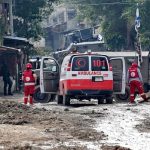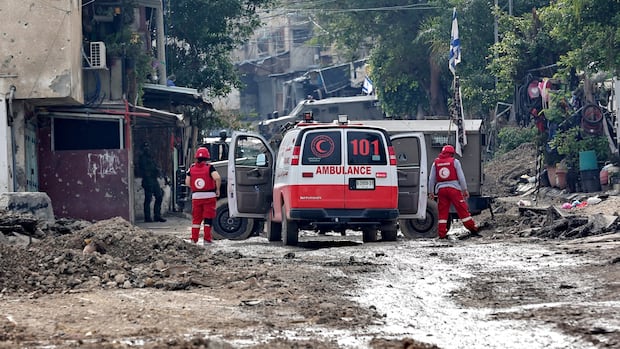Some of the visuals coming out of Los Angeles County over the past week are ones we expect with wildfires: dramatic flames, orange skies and damaged structures.
But what’s with the pink powder blanketing some neighbourhoods?
The eye-popping substance coating streets, cars and surfaces is actually fire retardant, dropped by aerial firefighting tankers in massive plumes of red or pink.
Unlike water drops, which target active flames, fire retardant is dropped by planes ahead of a fire’s path to slow the fire’s progress and allow crews to construct fire lines.
Thousands of gallons of fire retardant have been dropped in Los Angeles County since fires broke out last week, officials say. The deadly fires have killed at least 25 people, destroyed more than 12,000 structures and displaced tens of thousands of residents so far.
What exactly is fire retardant?
Fire retardants are composed of fertilizer chemicals such as ammonium phosphates. They often include bright pigments to aid pilots in dropping the retardant accurately.
They work to slow the rate of fires by cooling and coating plants that serve as fuel to a fire, depleting the fire’s oxygen, and slowing the burning process “as the retardant’s inorganic salts change how fuels burn,” according to the U.S. Forest Service.
Phos-Chek, made by the company Perimeter Solutions, is the retardant being used in Los Angeles County, and the most common one used in Canada. It’s also the most-used fire retardant in the world, according to a 2022 report from The Associated Press.
Although there are several formulations, it generally comes in a powder concentrate that is mixed with water before being dropped from tankers.
Is it safe?
Generally, fire retardants approved for use are not considered toxic to humans — though direct inhalation, eye contact or consumption can cause irritation, and scientists say more studies into long-term exposure are needed.
But fire retardants can be toxic to fish or other aquatic animals if they get into waterways. For this reason, the U.S. Forest Service prohibits dropping fire retardant within 300 feet of waterways or specifically mapped out avoidance areas, “except when human life or public safety are threatened.”
A study released last year in the journal Environmental Science & Technology Letters found that some fire retardants, including Phos-Chek LC-95W, contained toxic metals, including lead and arsenic.
A representative with the U.S. Forest Service told NPR that LC-95 had been phased out in 2025 in favour of the newer MVP-Fx formulation. According to Perimeter data, Phos-Chek MVP-Fx is much less toxic to fish than the older LC-95 formulations.
Perimeter has previously stated that residents should try to clean off retardant with water and mild soap as soon as safety allows.
“The longer the retardant dries, the more difficult it is to remove completely,” the company stated in a brief. Pressure washers can be used on larger surfaces, it added.
The bright colour will slowly fade with exposure to sunlight.
Wayne Coulson, CEO of Vancouver-based Coulson Aviation says most of the flying his company has done to support fire crews in Los Angeles has been at night.
Wildfires are connected to a range of health issues, with studies showing long-term smoke inhalation can seriously impact the lungs and heart, and even raises the risk of dementia more than other forms of air pollution.
The U.S. Forest Service has been using aerial fire retardants since the 1950s, according to their website, but its usage has gone through many transformations over the years as older formulations were phased out and regulations changed.
In 2005, the U.S. District Court for the District of Montana ruled that the Forest Service had violated the National Environmental Policy Act by not carrying out proper analysis of aerial fire retardant’s impact on the environment and endangered animals. After years of back and forth, the U.S. Forest Service carried out assessments and implemented the requirement of no dumping on waterways and avoidance zones in a 2011 decision.
Last year, the U.S. Forest Service announced that they had decided against entering into a contract with Compass Minerals for magnesium chloride-based aerial fire retardants after inspections found corrosion in the aerial tankers used to deploy the company’s retardant.












